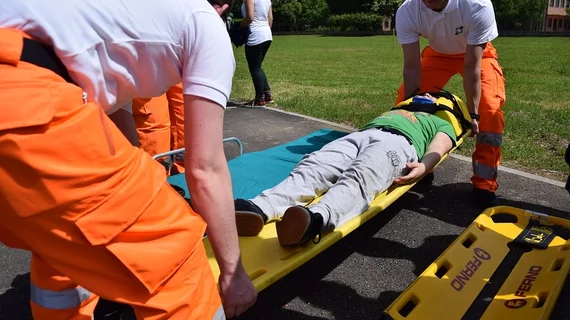AI predicts acute kidney injury in burn, trauma patients
Machine learning (ML) algorithms can be trained to predict acute kidney injury (AKI) in burn and trauma patients within the first 24 hours, according to a new study published in Scientific Reports.
“AKI is a common complication among critically ill patients,” wrote Hooman H. Rashidi, MD, department of pathology and laboratory medicine at the University of California, Davis, and colleagues. “Severely burned patients, in particular, have been shown to be at high-risk with up to 58% experiencing AKI. The early recognition of AKI helps guide fluid resuscitation and titrate dosing of nephrotoxic drugs in these populations.”
After noting that AKI classification was similar among burn patients and non-burned trauma patients, the researchers aimed to see if data for one patient population (burn patients) could be applied to research focusing on another population (non-burned trauma patients). The team’s initial dataset (Cohort A) included 50 adult patients with burns on at least 20% of their total body surface area, and then a second dataset (Cohort B) of 51 patients with burns on at least 20% of their total body surface area or non-burn trauma-related injuries was brought in to “determine the generalizability” of each model.
Five ML algorithms—logistic regression (LR), k-nearest neighbor, random forest, support vector machine and a multi-layer perceptron deep neural network (DNN)—were then developed and validated on Cohort A and Cohort B. The team found that the LR and DNN models performed the best in terms of accuracy (92%), sensitivity (91%), specificity (93%) and AUC (92%).
Also, the team reported that neutrophil gelatinase associated lipocalin (NGAL) was predictive of AKI in both Cohort A and Cohort B. AI models that did not include NGAL consistently “showed lower performance measures” than those that did. The authors believed that their inclusion of NGAL is “likely” why their models performed better than models used in prior studies.
“Our study highlights the potential power of ML in enhancing the performance of AKI biomarkers in a high-risk population and emphasizes the profound importance of conducting generalization studies across different models,” the authors wrote. “Specifically, our data showed ML was able to enhance the predictive capability and clinical sensitivity of NGAL when it is used in combination with other known biomarkers.”

